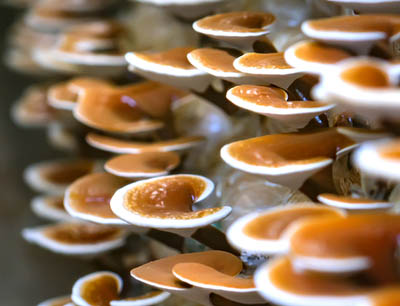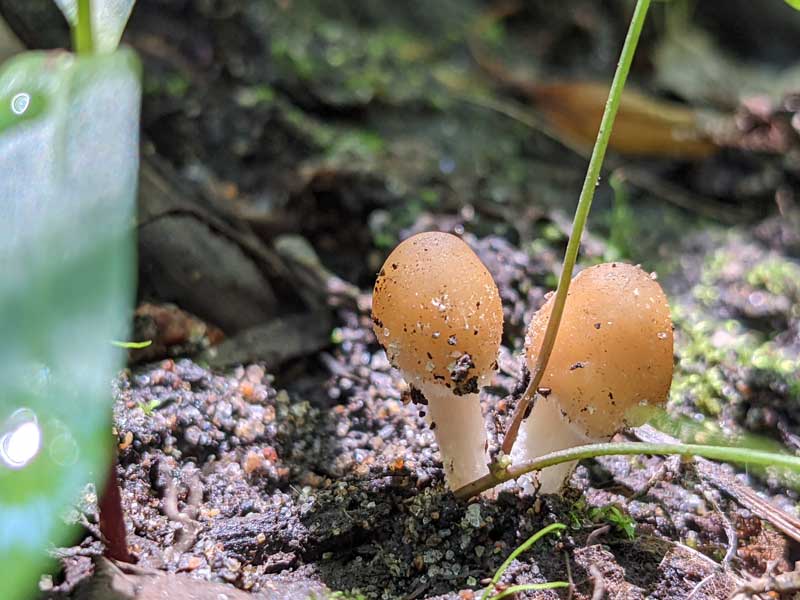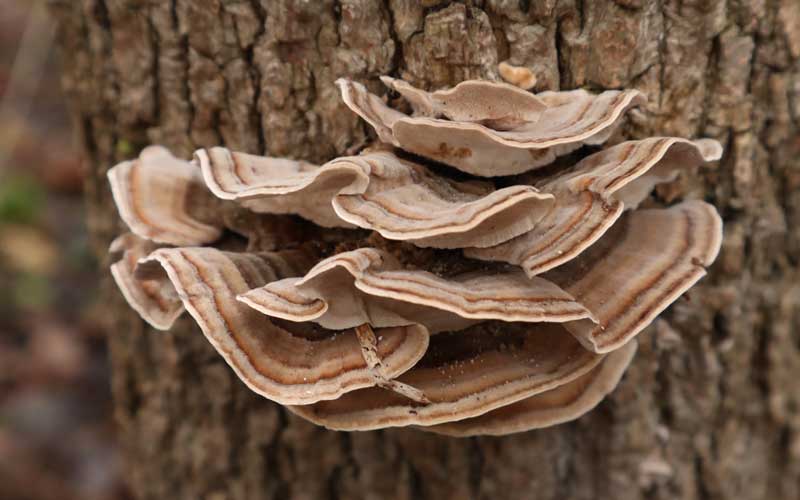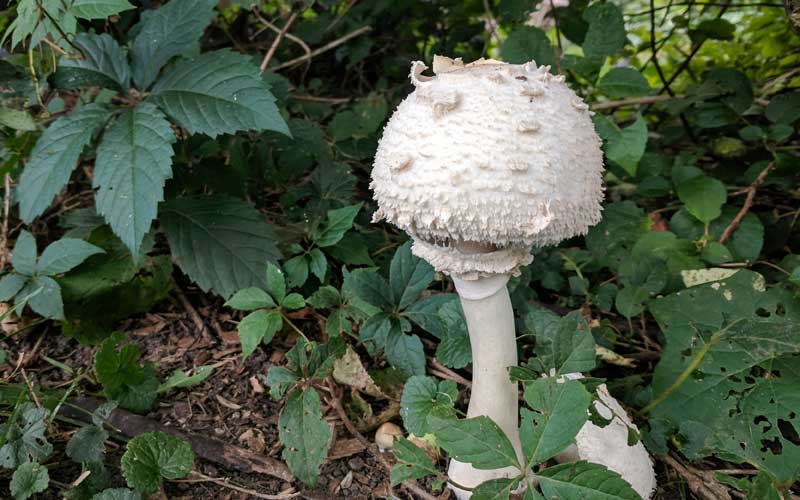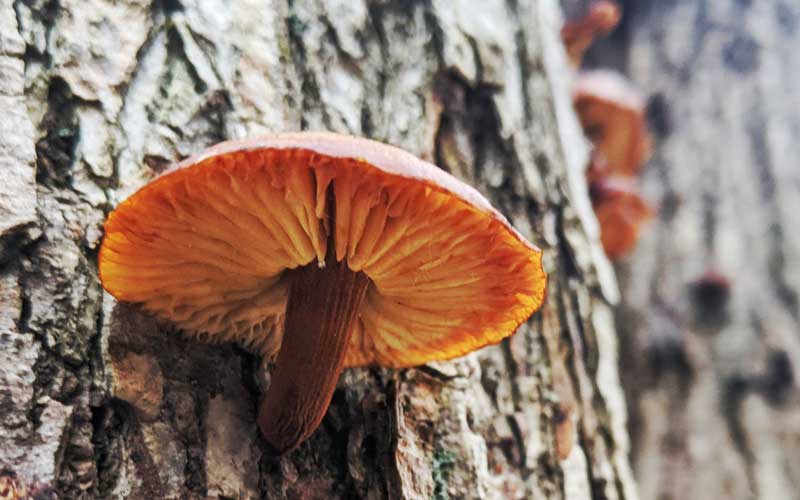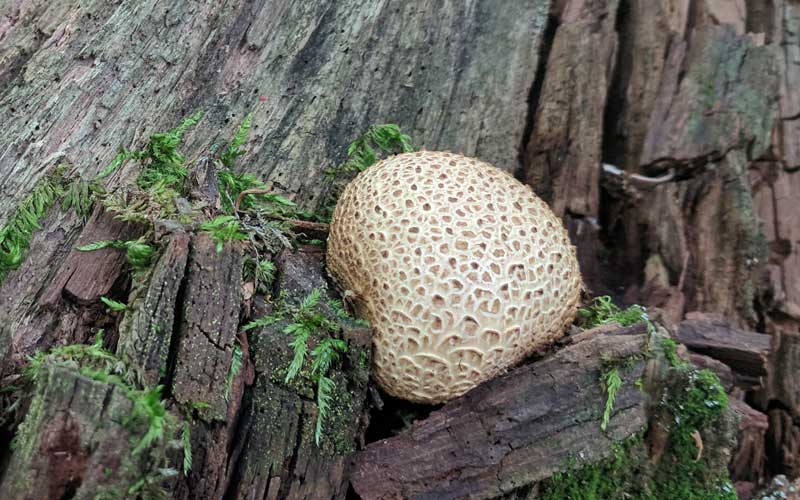- Home
- Mycelium Intro
- Agriculture
Fungi’s Growing Role in Sustainable Agriculture.
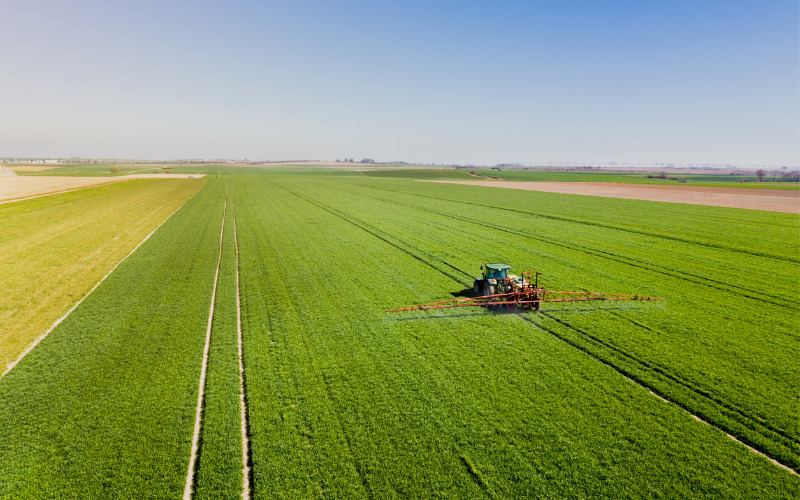 Industrial agriculture on a massive scale is efficient, but also damaging to the soil.
Industrial agriculture on a massive scale is efficient, but also damaging to the soil.Mycorrhizal fungi play an increasingly important role in sustainable farming practices. Fungal treatments of soils and seeds are shown to provide environmental benefits, improving soil and plant health, controlling pests and diseases, and increasing crop yields – without the damaging effects of chemical fertilizers and pesticides.
Fungi’s ability to restore natural processes in stressed croplands is uniquely suited to regenerative agriculture - which emphasizes holistic farming practices that focus on the health of ecological systems as a whole.
Let’s dig a little deeper into the science behind fungi’s agricultural superpowers. We’ll examine how mycorrhizal networks outperform synthetic chemicals, and why they’re beneficial to the health of our planet and the food we eat.
Links between soil health and nutrients.
For most of the 20th century, the goal of large-scale commercial agriculture was to increase crop yields – producing large quantities of monoculture crops on less land, in shorter timeframes, and at less cost. Farmers accomplished this by using synthetic fertilizers and pesticides.
Although monoculture crops are cheaper to grow, these crops just don’t compare when it comes to flavor or nutrient content.
There is a proven
correlation between declining soil health and lower nutrient density in crops.
Industrial farming results in higher yields per acre at lower costs to consumers, producing limited varieties of fruits and vegetables that contain far less nutrients – and wreak havoc on human health and the environment. The more synthetic fertilizers that farmers apply, the poorer the soil quality becomes, and the more fertilizers they’ll need to use to keep growing.
The environmental
cost of industrial agriculture.
Industrial agriculture contaminates ground water and soils with forever chemicals – toxins used in synthetic fertilizers and pesticides that linger in the environment for hundreds of years – killing soil organisms (bacteria and fungi), insects, birds, mammals, and fish, working their way up the food chain onto our tables.
Synthetic fertilizers also contribute to soil leaching, leaving croplands nutrient deficient, and cause large-scale nitrogen off-gassing – a problem in global warming.
When farmers saturate their fields with synthetic fertilizers, they overload soils with nitrogen (N), phosphorous (P), and potassium (K) – three major macro-nutrients all plants rely on. This prevents soil microbes from serving as carbon storage banks, and the excess NPK leaches into the environment.
Excess nitrogen off-gasses directly into the atmosphere, where it becomes a greenhouse gas. Excess phosphorous causes plants to reject colonization of beneficial mycorrhizal spores, and fungal colonies die without plant hosts.
Chemically saturated soils are less drought tolerant, more susceptible to cold temperatures, salt accumulation, pathogens, heavy metals, compaction, erosion, and herbivores – and they have much lower fecundity, bearing fewer flowers, seeds, and fruits.
Fungi are hyper-efficient nutrient brokers.
The good news is that scientific research has developed sustainable methods to reverse the environmental damage of commercial agriculture – building productive soils by reintroducing mycorrhizal fungi.
Healthy soils team with microorganisms – bacteria, fungi, and nematodes, which act as decomposers, turning organic matter into available nutrients.
Fungi increase nutrient
exchange between soils and plants, acting as efficient power brokers.
Fungi do this by mining essential nutrients locked in the soils and delivering them to plant roots in exchange for sugars that plants produce through photosynthesis. The subterranean fungi that broker nutrient exchange have a special name – arbuscular mycorrhizal fungi (AMF).
Research shows that when AMF inoculants are applied to agricultural fields, farmers have to use less nitrogen and phosphorous fertilizers on their soils to produce greater crop yields.
Farmers reap benefits of fungal networks.
Farmers are embracing AMF treatments as a sustainable way to increase soil productivity and nutrient density in crops – nurturing beneficial partnerships between plants and mycorrhizae.
The proof of fungi’s agricultural prowess is now widely established by scientific research.
- In 2003, a study showed that pepper plants yielded 23% more fruit than those not inoculated by AMF.
- In 2008, researchers found that strawberry plants connected to a mycorrhizal network produced 17% more berries than solitary plantings.
- In a global field study, AMF inoculants were shown to increase yield of wheat, barley, potatoes and cowpea. AMF increased zinc uptake in deficient soils, increased uptake of sulfur and calcium, and improved water absorption and tolerance of water stress in citrus and avocado seedlings.
- The benefits of AMF treatments can last the entire lifespan of annual crops by adding small amounts of fungal conidia to seeds prior to sowing – increasing yield, biomass, and drought tolerance.
Cultivating
native fungi in soils.
One of the biggest differences between croplands and the soils in natural ecosystems is the abundance of naturally occurring AMF spores.
In a 50ml sample of soil from native prairie land, researchers found a whopping 1,300 AMF spores. The same volume sampled from commercial cropland averaged fewer than 200 AMF spores. In the agricultural samples, fungal spores they did find were almost all non-arbuscular, providing little benefit to plants.
In 2010, soil scientists at the Rodale Institute found that using arbuscular mycorrhizal fungi in farming enabled plants to access immobile nutrients like copper, zinc, and phosphorus more readily. Rodale’s study also discovered that rather than relying solely on AMF inoculum, it was equally productive (and more cost efficient) to cultivate native mycorrhizae spores already in the soil.
The biology of fungal attraction.
It is estimated that 80-90% of flowering plants on earth are mycorrhizal hosts, which includes most fruit and vegetable crops. Mycorrhizal partnerships are the oldest known symbiotic relationships known to science – a biological relationship spanning 400 million years.
Without the introduction of
chemical fertilizers, plants are genetically programmed to crave mycorrhizal
colonization.
When a seed germinates, the seedling emits biochemical hormones that attract AMF spores to its root system. The seedling grows micro-channels in their cellular root structure for mycorrhizal filaments (hyphae) to grow into. Fungal hyphae penetrate individual plant cells along these channels, forming arbuscules – receptacles where nutrient exchange takes place.
Mycorrhizal fungi are so specialized, they can only feed on sugars received through arbuscules. Fungal hyphae use these sugars to grow out of plant roots into the surrounding soil to mine for phosphorus, which they take back to their host.
Mycorrhizal caregivers and bodyguards.
AMF protect the health of their plant hosts at all costs – defending them against invaders with defensive enzymes, improving soil texture, fending off soil-borne diseases, and nurturing them with the right amount of water and nutrients delivered to their arbuscular doorstep.
Mycorrhizal fungi also synthesize compounds which enhance the adaptive resilience of plants against environmental stresses. With new threats of climate change and global warming, scientists are innovating ways to utilize AMF’s superpowers to protect crops.
Today, AMF are successfully used as biocontrols to protect plants from pathogens and disease. And as biofertilizers – applied to soil, seeds, or plant surfaces to colonize the rhizosphere or internal tissues and promote plant growth.
The future of agroecology.
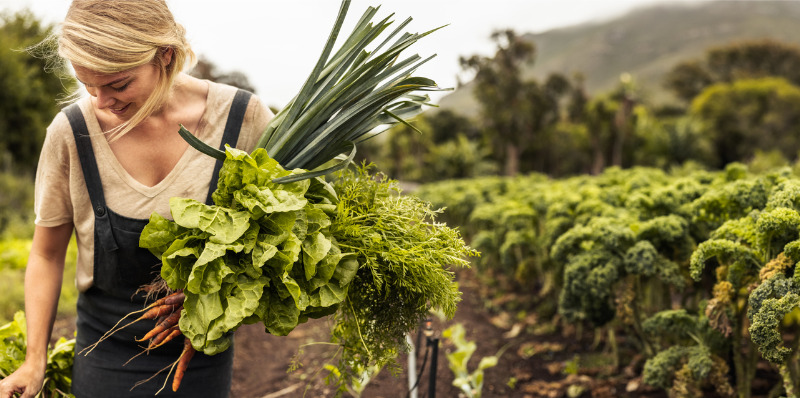
More farmers are embracing the sustainable practices of regenerative agriculture to regenerate soils, sequester carbon, increase biodiversity, and produce more nutrient-dense crops.
Arbuscular mycorrhizal fungi are fundamental to this effort, paving the way for ecological restoration of depleted croplands. With 400 million years of cultivation experience, AMF are indeed earth’s original farmers.
Related Topics:
Mushrooms score top points for sustainable food production.
In a world where food production is anything but sustainable, mushrooms stand out as a rare and positive exception. The full article...
Mycelium is the secret ingredient in healthy garden soil.
Mycelium holds everything together in the soil of a healthy garden. Without the mycelium, the health of all your plants and trees will suffer. More here...
How mushrooms and mycoforestry improve forest health.
Mycoforestry is the strategy of using mycorrhizal fungi to help damaged ecosystems—big or small—recover faster. The full article...
Could plastic-eating mushrooms save our oceans?
Our oceans are choked with plastics. Mycoremediation projects using plastic-eating mushrooms could help solve the problem. Full article...
Using fungi to combat and prevent algae blooms.
Algae blooms harm aquatic life and local economies. Fungi might hold the key to preventing them through mycorestoration. Find out how...
